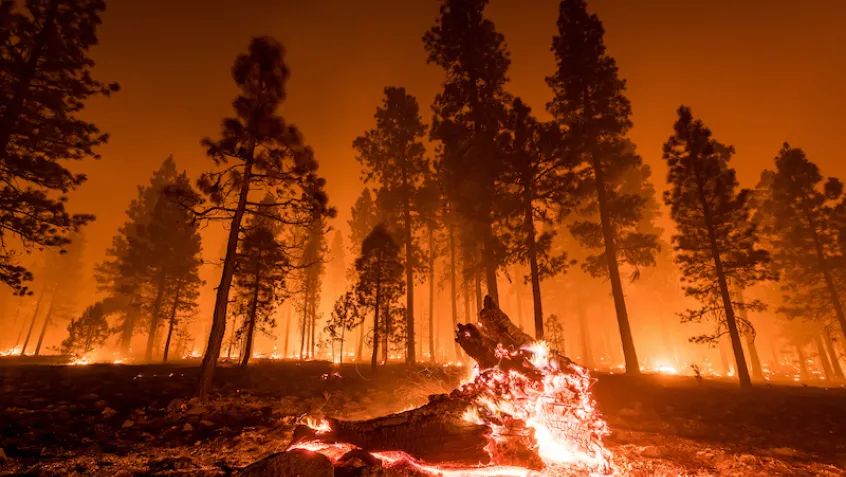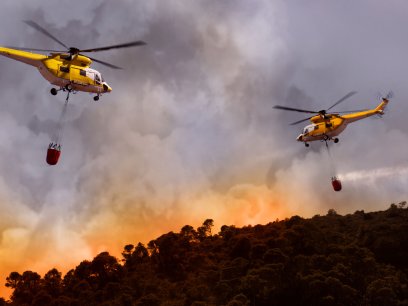
You and your family probably have a plan for a house fire—a smoke detector in place, an evacuation plan, and a safe place to gather. But do you have a plan for a wildfire?
In 2024, nearly 65,000 wildfires were reported in the United States, burning almost 9 million acres—an increase from the previous year and well above the five- and ten-year averages. From Florida to Alaska, wildfires are reaching beyond traditional fire seasons, burning earlier and smoldering later in the year than they have historically, claiming lives and hitting millions of acres of land with billions of dollars in damages. Hotter, drier summers and warmer winters are leading these hazards to become year-round threats for some regions of the country, and setting the stage for “runaway fire season” in others, where fires have the chance to burn out of control, placing the surrounding communities in significant danger. These higher costs are taking a toll on agencies tasked with keeping residents safe.
While there is no way to fully protect yourself from the chance of wildfires, you can take action to help keep your family safe:
Prepare your home:
- Clear your gutters, roof, eaves, deck, and crawlspaces of debris—this material is flammable.
- If you see branches that overhang structures on your property, trim them back up to 6-10 feet from the ground.
- Check your insurance! Make sure your homeowner's policy is up to date and prepare or update a list of your home's contents.
- If your home is in a wooded area, or an area that you know to be frequently threatened by wildfire, consider taking the zone approach with your landscaping, creating defensible space around your home that embers and small flames will have difficulty bridging.
- Regardless of where you live, follow the tips in this Firewise checklist for homeowners to help make your home inhospitable to fire.
Prepare your family:
- Talk about it! Young and old, everyone needs to be on the same page about your risks and plan for wildfire. Check out these resources on how to have these conversations with your family.
- Make sure everyone knows where to go to learn about your area's risk of weather that would be favorable for the start or spread of wildfire: https://www.weather.gov/fire/
- Make a family communications plan so everyone knows how to reach everyone else—you may become separated from your phone during a crisis and lose access to saved numbers, so having a second copy is key.
- Maintain an emergency supply kit—if you already have one made, take the time to make sure that all of the materials are up to date.
- Have everyone review the steps to take if they become trapped during a wildfire.
Prepare for evacuation:
- Review the basics of evacuation—the middle of a crisis is not the time you want to be looking up potential routes to safety.
- Create an evacuation plan with your family—where to go, how to get there, what to take, and how to let others know that you're ok. People, pets, prescriptions, important documents, personal computers, and cash and credit cards are all essential in the case of evacuation—if there is time.
- Go over the evacuation checklist with your family—everyone should know what they need and where to find it before the evacuation orders come in, as well as steps to take to guard your empty house. What you wear when you evacuate is also key—long pants, long-sleeved shirts (100% cotton), heavy shoes, and face and eye protection are essential.
Article updated 5/30/2025


